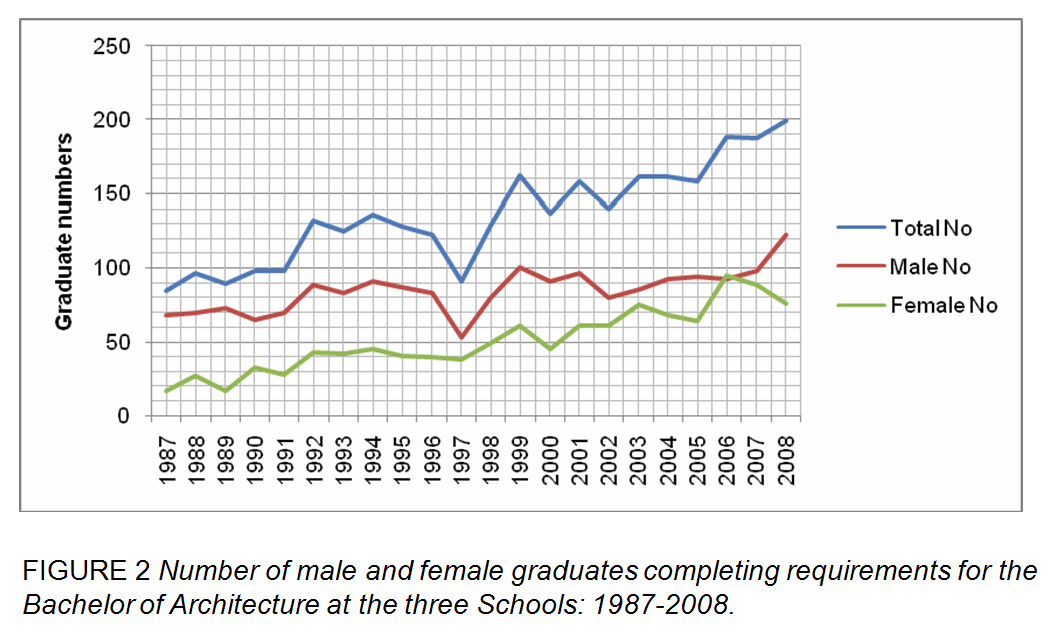Errol Haarhoff’s recent report on the gender in architectural education, reveals the staggering progress that women have made in the architectural profession. They now constitute a mere 18% of registered architects. This follows on from Gill Matthewson’s 2004 SAHANZ conference paper (“Take it to the Limit: Women as Breach in Architecture”), the watered down version of which was massaged into Exquisite Apart – the NZIA’s celebratory tome. In this paper Matthewson compared the then percentage of women architects (13.4%) with other professions. The numbers suggest it is easier to become a judge than an architect if you are a woman.
The dismal chances of women becoming registered do not relate to the number of women entering architecture schools, nor the numbers of women graduating. Errol’s graphs provide the evidence of this.

It’s not just New Zealand which is an unhappy place for women practicing architecture. The numbers in Australia, America and Britain are not dissimilar. In these countries women architectural graduates are said to number in the 35-40%; while registered women architects are more than half that.
De Graft-Johnson, Manley and Greed’s report for the RIBA “Why do women leave architecture?” summarised the reasons why women leave architecture as follows: “it is the accumulation and drip drip quality of their negative experiences rather than one single overriding issue which leads to frustration, disillusionment and eventual departure.” This suggests cultural issues related to the profession and practice of architecture, rather than single events such as registration. Something more insideous and less easy to address than simply more money and less hours – though no doubt that might help too …
References
de Graft-Johnson, Ann, Sandra Manley and Clara Greed Why do women leave architecture? (Bristol, May 2003)
Matthewson, Gill “Take it to the Limit: Women as Breach in Architecture” Limits: proceedings from the 21st Annual Conference of the SAHANZ (Melbourne 2004) v. 2, pp. 319-325.
Stevens, Garry “Women in Architecture” Archsoc.com (2010-2011)



Leave a Reply